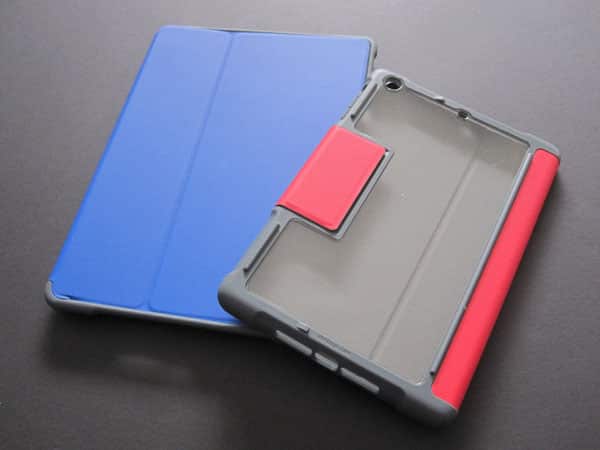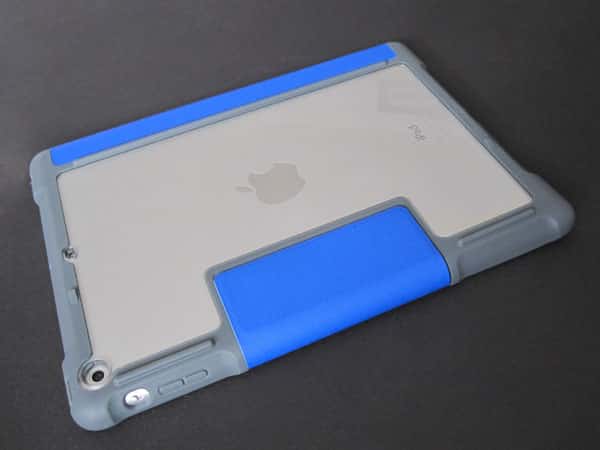STM is most well known for its bags, many of which fall squarely into the “great” category, but it has also worked on developing its iPad and iPhone case line over the past few years. At the 2014 CES, it was back with Dux for iPad Air ($50) and iPad mini ($45). Identical in all ways save size, these are the most protective cases the company has ever made, and also the best. A folio-style case, Dux brings together a red, blue, or black diamond-patterned faux leather lid with a gray rubber frame and clear plastic back. It’s the first case from STM to include button protection — something we’ve been wanting from STM cases for years — and also uses magnets in a smart way.

Thanks to the semi-rigid frame, it’s easy to pop the tablet into place. When you do, it sits recessed in a lip that’s much deeper than that of most folios, providing some degree of extra protection when the lid is not in place.
The bottom uses a familiar three-hole design, with one for each of the speakers, and the third for the Lightning port, providing enough room for oversized Lightning plugs. Moving up, the side switch is exposed through the rubber, as is the top microphone and headphone port. The volume and Sleep/Wake buttons, however, are protected by the material. We found that the latter took some breaking in, but once it was, all three functioned well.


Once of the cooler aspects of this case is its transparent back. Other than two holes at the top, one each for the iSight camera and second microphone, it’s a solid piece of plastic that reveals the back of your tablet.
It shows the Apple logo, iPad name, and regulatory text, alongside anything you may slip underneath. For example, you can insert a business card for identification purposes, or a photo to personalize it.

The lid is also interesting, although not totally unique. Instead of a tongue-and-loop closure, Dux uses a magnetic tab to stay securely shut. When it’s combined with the lip, you can be certain that the lid won’t move. Magnets are also used to lock and unlock the display, and to hold the tablet in a viewing or typing position. Folded behind the case, the tab latches on along the edge, and with the help of two ridges in the rubber, holds the angles.












